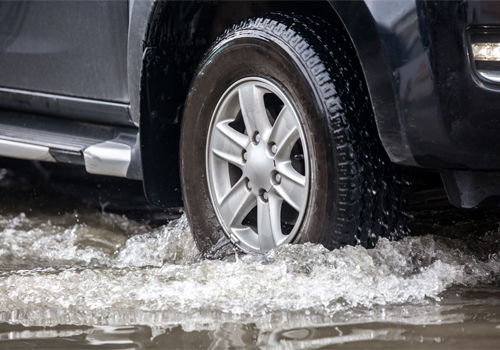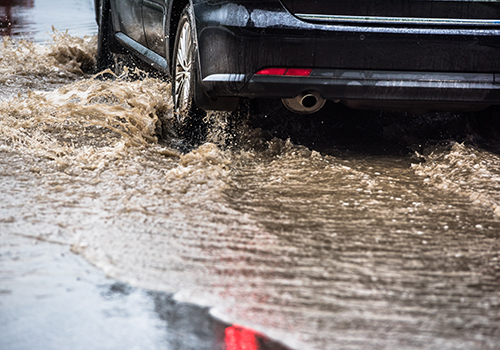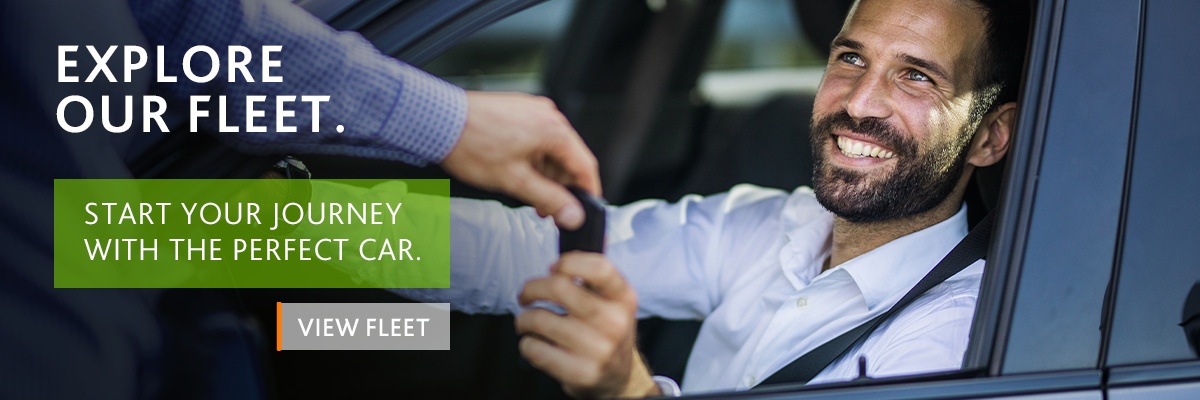Guerin® Blog
Driving Tips - Guerin
Aquaplaning: what it is, how to prevent it and what to do
Share
Aquaplaning is a dangerous driving phenomenon that can pose a serious risk, especially during heavy rain and poor road drainage. Recognising the signs of aquaplaning, knowing how to prevent it, and learning how to respond when it happens are all essential skills — especially if you're renting a car for autumn or winter travel.
If you're unfamiliar with aquaplaning or unsure how to deal with it, this guide is for you. Here, you'll find everything you need to drive more safely, even in wet conditions.



What is aquaplaning and why does it happen?
Aquaplaning (also known as hydroplaning) occurs when a layer of water forms between the tyres and the road, preventing proper contact. In that moment, the car essentially "floats" on water, leading to a complete loss of grip and control over steering and braking.
It can happen suddenly, even on straight roads, and with no visible warning signs. The steering may feel unusually light, and the car may stop responding to input.
Factors that contribute to aquaplaning
- Excessive speed: The faster you drive, the harder it is for tyres to disperse water effectively.
- Worn or under-inflated tyres: Tyres with low tread or incorrect pressure lose grip more easily.
- Standing water: Roads with poor drainage can accumulate water quickly.
- Damaged or uneven pavement: Cracks, potholes and surface wear can collect water and increase risk.
How to prevent aquaplaning
Preventing aquaplaning starts well before you're on the road — it’s all about vigilance, preparation, and regular maintenance.
1. Reduce your speed on wet roads
Slowing down is key. In wet conditions, reduce your speed by up to 30% below the posted limit. For example, if the road limit is 90 km/h, aim to drive at 60–65 km/h during heavy rain. This simple adjustment gives you more time to react and significantly reduces the risk of losing control.
2. Check tyre condition regularly
Tyres are your only point of contact with the road. Always make sure that:
- Tread depth is above the legal minimum (1.6 mm — ideally 3 mm);
- Tyre pressure is correctly adjusted to your vehicle and load;
- There is no uneven wear, cuts or sidewall bulges.
Did you know bald tyres can increase the likelihood of aquaplaning by up to 30%?
Tip: Guerin rentals include roadside assistance to help you deal with unexpected situations safely.
3. Increase your safety distance
Braking distances double on wet surfaces. Maintain a longer-than-usual distance from the vehicle in front. A good rule is the "4-second rule” — pick a fixed point and count four seconds between the front car and your own.
If the vehicle ahead brakes suddenly and you're too close, you may not have time to react, especially if aquaplaning occurs.
4. Avoid sudden braking and sharp turns
Driving on wet roads demands a gentle touch. Sudden braking, sharp steering movements, or cornering too quickly significantly increases the chance of losing control — particularly when aquaplaning is likely.
Approach curves with reduced speed and stable steering. Hold the wheel firmly but gently and avoid overcorrecting. Abrupt changes in direction or speed can cause the tyres to lose their grip.
Likewise, always accelerate gradually. Pressing the accelerator too hard — especially when exiting a turn or crossing a wet area — can result in tyre spin or loss of traction.
Driving smoothly is one of the best defences against aquaplaning and skidding.
5. Steer clear of puddles and uneven road surfaces
Avoiding puddles and poorly maintained roads is a fundamental safety practice during heavy rain. Pooled water can hide potholes or bumps that might cause a loss of balance or damage to your tyres, rims or suspension.
If it's not possible to avoid a large puddle, here’s what to do:
- Reduce speed gently before reaching the water;
- Keep your steering straight and steady through the puddle;
- Avoid accelerating or braking while crossing the water to prevent sudden loss of grip.
Even small puddles can surprise you — staying alert and cautious is key to staying safe.

What to do if your car starts to aquaplane
Despite every precaution, aquaplaning can still happen. In that moment, staying calm and reacting appropriately can make all the difference.
What to do:
- Ease off the accelerator smoothly to let the car slow down naturally;
- Hold the steering wheel firmly and keep it pointed straight;
- Avoid braking or accelerating until the tyres regain traction;
- Once you feel the car gripping the road again, resume normal driving gently.
- Stay calm. Reacting impulsively can worsen the situation — it’s your composure and technique that will bring the car safely back under control.
What not to do:
- Do not brake suddenly.
- Do not steer abruptly or overcorrect.
- Do not make sudden lane changes or panic turns.
These actions may cause a skid or even a complete spin.
Protect yourself with Guerin’s Glass & Wheel Protection
Heavy rain can conceal road hazards like rocks, debris or potholes — all of which can damage:
- Windscreens and windows
- Alloy wheels and rims
- Side mirrors or bodywork
By adding Glass & Wheel Protection to your Guerin booking, you stay covered for these unforeseen issues. It’s an extra safety net, especially valuable during long journeys or in harsh weather.
Rent your car with Guerin — 100% digital
Guerin offers a fully digital rental process, designed for maximum convenience:
- Easy online booking
- No paperwork
- Less waiting at the counter
- All the info you need, right on your phone
Learn more about Guerin’s 100% Digital Rental process.
Drive with confidence, rain or shine
Whether you're planning a road trip, a business journey or a weekend getaway, be prepared for all weather conditions. With Guerin, you benefit from:
- Rental stations all over Portugal
- A modern and diverse fleet
- Add-ons tailored to your needs
- Full support with roadside assistance
Share

